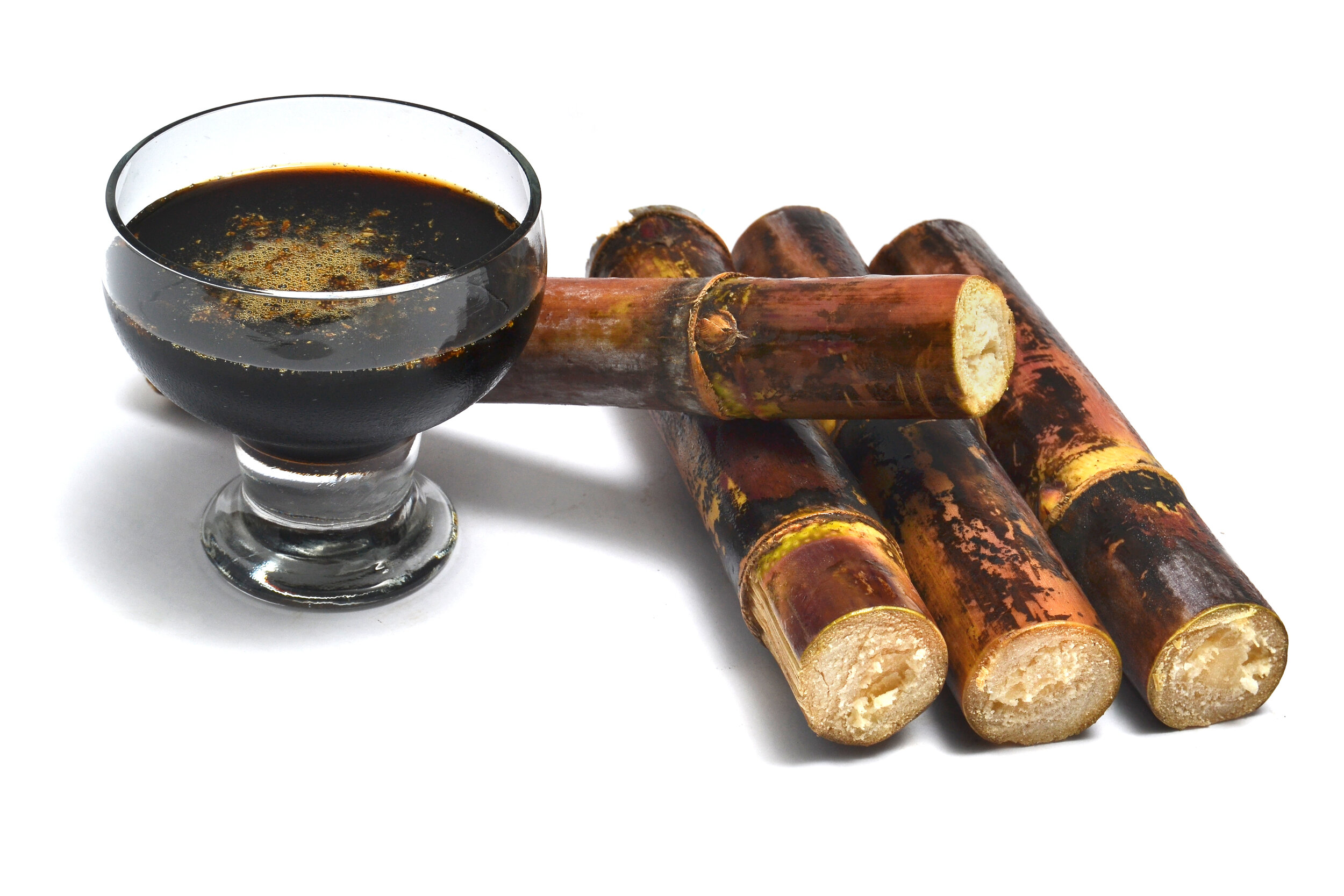Biofuels Made from sugar cane products: The Future
Wiki Article
A Deep Dive Into Sugar Cane: Insights on Production, Material, and Item Development
Sugar cane plays a vital role in farming, underpinning economies in exotic regions. Its cultivation involves elaborate processes influenced by various environmental variables. Cultivators encounter significant challenges, including climate change and market changes. Technologies in item growth are arising in response to advancing customer needs. Recognizing these dynamics is essential for grasping the future of this vital crop and its effect on international markets. What exists in advance for sugar cane and its myriad applications?The Relevance of Sugar Cane in Global Farming
Sugar cane works as a necessary plant in global farming, underpinning economic situations and food systems in several tropical areas. This flexible plant is largely cultivated for its high sucrose web content, which is fine-tuned right into sugar, an essential component in countless foodstuff. Past sweetening, sugar cane is likewise important for creating biofuels, specifically ethanol, adding to energy sustainability.The economic significance of sugar cane includes employment, offering incomes for millions of farmers and workers in handling centers. In several nations, sugar cane growing and processing represent considerable parts of agricultural GDP, affecting profession equilibriums and regional development.Additionally, sugar cane's adaptability to various climates enhances its relevance as a plant, ensuring regular supply in worldwide markets. Its spin-offs, including molasses and bagasse, further expand its energy, making it a necessary element in food, energy, and sector. Generally, sugar cane continues to be a keystone of agricultural performance worldwide.Farming Procedures: From Growing to Harvest
Growing sugar cane entails a collection of well-defined processes that ensure ideal development and yield. The growing starts with land preparation, where the soil is tilled to safeguard optimal oygenation and drainage. Following this, seed cane, which is composed of fully grown stalks, is chosen and reduced into sections (sugar cane products). These sections are then grown in furrows, making sure appropriate spacing to enable sunshine and nutrient access.Once planted, irrigation systems are employed to maintain adequate wetness levels, as sugar cane thrives in damp problems. Weeding and insect administration are important during the expanding duration to minimize competition for resources. Nutrient application, consisting of plant foods, sustains durable development. As the plants grow, keeping an eye on for diseases and pests continues.Harvesting typically happens 10 to 24 months post-planting, depending upon the range. The walking canes are reduced short, guaranteeing marginal waste, and are swiftly transferred for refining to preserve sugar top qualityGeographical Distribution of Sugar Cane Production
The geographical circulation of sugar cane production is greatly shaped by specific environment and dirt requirements. Significant producing countries, such as Brazil, India, and China, take advantage of exotic and subtropical climates that sustain the plant's development. Understanding these aspects offers insight into the international landscape of sugar cane farming.Major Producing Countries
Sugar cane is grown in numerous areas worldwide, particular nations control production due to desirable environments and farming techniques - sugar cane products. Brazil leads the worldwide market, representing around one-third of total production, many thanks to its comprehensive ranches and progressed cultivation techniques. India adheres to as a considerable producer, benefiting from both positive weather and a huge residential market. China and Thailand also rate amongst the top manufacturers, with well-established frameworks sustaining their sugar industries. Various other remarkable factors consist of the USA, Mexico, and Australia, each leveraging their one-of-a-kind farming systems to boost result. These countries play a crucial duty in the sugar cane supply chain, influencing worldwide prices and scheduleEnvironment and Dirt Demands
Ideal environment and dirt conditions are critical for successful sugar cane production. Sugar cane flourishes in exotic and subtropical regions, calling for warm temperatures between 20 ° C and 30 ° C (68 ° F to 86 ° F) These plants need bountiful sunshine and rains, preferably in between 1,500 to 2,500 millimeters each year, to ensure peak growth. The soil ought to be well-drained, fertile, and abundant in raw material, with a pH degree preferably between 5.5 and 8.5. Sandy loam or clay loam dirts are especially for sugar cane growing, supplying necessary nutrients and water visit the site drainage. Geographical circulation is largely influenced by these factors, with major production locations located in Brazil, India, and China, where environmental conditions align with the plant's needs for development and return.
Challenges Faced by Sugar Cane Growers
Sugar cane cultivators experience substantial obstacles that affect their source of incomes. Climate adjustment presents uncertain climate patterns, affecting plant return and high quality. Additionally, market cost volatility produces economic uncertainty, making complex lasting preparation for these agricultural producers.Environment Change Impacts

Exactly how do environment change impacts influence the stability of sugar cane Full Article growing? Increasing temperatures and unpredictable climate patterns especially challenge sugar cane farmers. Boosted warmth can bring about lowered returns, as the plants struggle to grow in extreme problems. Furthermore, transformed rains patterns result in either droughts or extreme flooding, both damaging to crop health. Parasites and conditions are most likely to proliferate in warmer environments, even more threatening production. Soil destruction and salinization due to rising sea levels can lessen cultivable land. These weather modifications force cultivators to adapt their methods, commonly requiring financial investment in new innovations and durable plant selections. Ultimately, the sustainability of sugar cane cultivation hinges on resolving these climate challenges effectively.

Market Price Volatility
Market value volatility offers considerable challenges for sugar cane farmers, affecting their economic stability and planning. Variations in market value, driven by elements such as worldwide supply and demand, weather, and federal government policies, develop uncertainty for producers. This unpredictability makes it tough for cultivators to forecast earnings and handle operating costs properly. In addition, when costs drop suddenly, many farmers may struggle to cover production prices, leading to prospective financial distress. To mitigate these threats, some farmers turn to contracts or hedging strategies, yet these options might not come to all. Consequently, market rate volatility remains a relentless concern, influencing the total sustainability and profitability of sugar cane farming.Recognizing the Sugar Cane Supply Chain

Market Fads Affecting Sugar Cane Prices
The dynamics of sugar cane costs are influenced by a range of market fads that mirror broader economic conditions and consumer behaviors. Worldwide need for sugar and sugar-related items plays a necessary function, with enhancing interest in natural and sustainably sourced items driving costs higher. In addition, fluctuations in oil rates impact the expense of production and transport, further affecting market prices. Weather patterns are an additional significant aspect; negative conditions can result in lowered yields and raised prices. Profession policies, tariffs, and global agreements likewise shape the market landscape, impacting supply chains and availability. Money exchange prices can complicate global trade, impacting prices for both exporters and importers. Shifts in customer preferences toward much healthier options might modify demand patterns, producing a ripple impact on sugar cane pricing. sugar cane products. Understanding these interconnected trends is crucial for stakeholders in the sugar sector.Innovations in Sugar Cane Product Growth
Countless advancements in sugar cane item advancement are reshaping the industry and broadening its applications. Scientists are checking out alternative usages beyond typical sugar, including biofuels, biodegradable plastics, and wellness supplements. Developments in enzymatic handling strategies have improved the removal of valuable compounds such as antioxidants and vitamins from sugar cane, promoting its usage in useful foods.Additionally, the development of genetically modified sugar cane selections aims to enhance yield and resistance to bugs, while also enhancing the nutritional profile of the crop. Advancements in fermentation processes have led to the production of high-grade alcohols stemmed from sugar cane, attracting a growing market for craft spirits.Moreover, lasting techniques in farming and processing are acquiring grip, with a concentrate on lowering ecological influences. These developments not only produce new market possibilities however likewise promote an even more lasting strategy to sugar cane production, aligning with international fads towards environmentally friendly items.Often Asked Concerns
What Are the Ecological Influences of Sugar Cane Farming?
The environmental influences of sugar cane farming consist of deforestation, loss of biodiversity, water pollution from fertilizers and pesticides, soil deterioration, and greenhouse gas emissions, every one of which significantly add to ecological discrepancies and climate adjustment.
How Does Sugar Cane Cultivation Affect Citizen Economies?
Sugar cane growing substantially influences local economic situations by creating tasks, stimulating agricultural fields, and producing revenue for farmers. It can likewise lead to financial dependence and changes based on market needs and ecological conditions.What Are the Key Vermin and Diseases Affecting Sugar Cane?
The main insects impacting sugar cane include the sugarcane borer and aphids. Illness such as red rot and smut substantially impact yield. Farmers have to execute incorporated parasite administration strategies to reduce these risks efficiently.Exactly How Is Sugar Cane Processed Into Different Products?
Sugar cane handling involves squashing the stalks to draw out juice, adhered to by clarification, evaporation, and formation. This process yields raw sugar, molasses, and ethanol, each serving unique purposes in numerous sectors, from food to energy.What Are the Nutritional Aspects of Sugar Cane?
The nutritional facets of sugar cane consist of vital vitamins and minerals, specifically B vitamins, calcium, and iron. It also consists of fiber, though primarily composed of sucrose, which supplies power but does not have significant nutrients.Report this wiki page